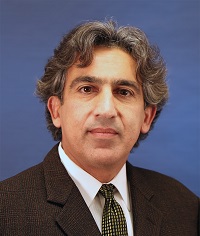Sometimes it takes a tech-friendly engineer to understand the value and applicability of new or relevant architecture, engineering and construction (AEC) tech tools. Indeed, the construction sector would be decades behind without the help of these professionals, who regularly test and adopt such tools to improve their jobs and overall work performance in the industry.

Kourosh Langari
With 31 years in infrastructure planning and design with a focus on the integration of engineering/survey/GIS software applications, civil engineer Kourosh Langari has helped establish some of the AEC industry’s best practices. Through his work, the Caltrans Transportation Engineer has helped increase efficiencies in workflows of the Integrated Project Delivery (IPD) process. In addition to working with Caltrans (California Department of Transportation) for 23 years, he also has worked in the private sector, for AECOM.
At the upcoming SPAR 3D Conference, Kourosh will speak during the Integrated Project Delivery/In-Depth Project Session: UAS Implementation and Application for Caltrans Emergency Slide Project session. SPAR 3D recently touched base with Langari to talk about the state of AEC, tools that are helping the sector, how government agencies are helping the industry and more.
SPAR 3D: You’ve been a civil engineer a long time… How has the job changed for you over the years?
Langari: “I have over 33 years of experience in the AEC arena. In the late 80’s we used to draw our project line work in 2D on Mylar and vellum. Today, we can develop 3D alternatives by using Reality Capture and Virtual Design Construction (VDC) in short order, and with machine learning technology becoming more prevalent, we’re becoming even more efficient with minimizing the iteration processes. So, the 21st-century workflow is all about disrupting the existing AEC workflow and re-engineering the industry’s approach to completing projects.”
How is Caltrans adopting tech to develop the smartest projects?
Langari: “Caltrans is heavily invested in new technology. The Department’s Division of Research, Innovations & System Information is constantly working with national the Transportation Research Board (TRB) to evaluate new technologies, benchmark, and evaluate the effectiveness of tools.”
Why do you like your work?
Langari: “Being a civil engineer for a DOT and working in the public sector is very gratifying. For more than 30 years I have been involved in mega-projects in Northern California, such as the Bay Bridge, Doyle Drive Presidio, BART, SMART and others. We’ve helped the citizens of California by providing a safe, sustainable, integrated and efficient transportation system. That system enhances California’s economy and livability. “
Do you think that large government agencies like transportation departments can take a lead role in fostering innovation in the AEC industry?
Langari: “Absolutely. Large departments of transportation are strategically placed to foster innovation and establish industry best practices, standards, and for benchmarking of various products and workflows. Caltrans recently established an Innovation Center to foster all the ideas that help the department and industry with better communication and workflow efficiencies.”
Tell us a little bit about your upcoming SPAR 3D session that focused on integrated project delivery. How will what you will be speaking about be applicable to all attendees?
Langari: “Depending upon the attendees’ background, there are a number of takeaways. We will discuss the business case for implementing UAS technology at a large Department Of Transportation; and we will showcase the development of standards and best practices, including training and safety requirements. We will showcase some of the early adaptors of this technology across the organization and we’ll discuss the department’s R&D effort to establish industry standards for design-grade survey and mapping and associated best practices. Also, we will show actual emergency projects that benefited from the implementation of this technology.”
How can attendees prepare to get the most out of it?
Langari: “The goal of this presentation is demonstrating the UAS Integrated Project Delivery workflow and technology implementation across California Department of Transportation for Emergency Projects. The audience mindset should be wanting to see a new technology sector implementation across a large state DOT, with the development of regulation, business practices, training, safety, workflow, QA/QC and final deliverables.”
For more on this topic, be sure to catch Kourosh’s presentation at SPAR 3D, which will be co-located with AEC Next on May 21-23 at the Anaheim Convention Center in Anaheim, CA. Click here for more details.






